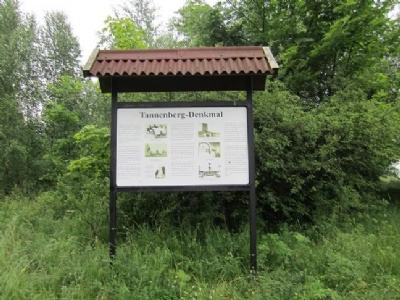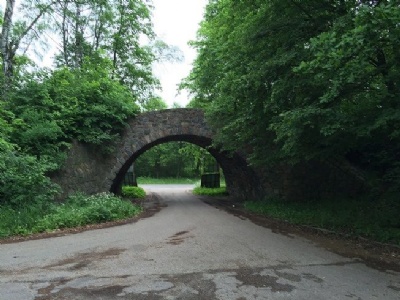Olsztynek
Between 1925 and 1927, the Germans built a monument commemorating the Battle of Tannenberg. This was a battle that took place in August 1914 outside the city of Hohenstein in former East Prussia (now Olsztynek about twenty kilometres south of Olsztyn). A battle where German imperial army defeated the Russian army. But talking about the Battle of Tannenberg is actually incorrect because Tannenberg (polish Stebark) is located about ten kilometres west of Hohenstein. But the reason the Germans chose to call it Battle of Tannenberg goes back in time.
In 1410, a great battle took place in Tannenberg (Stebark) where a coalition of Poles, Lithuanians and tartars defeated the Teutonic knights in a decisive battle. This battle became a central point in the Pangermanic movement and has been given a mythical legend. Therefore, it was important for the Germans, just over 500 years later, to benefit from this myth and show that they had taken a terrible revenge for the defeat of 1410.
The monument (or memorial) consisted of eight towers bound together by a wall to symbolize the heroism of the German soldiers during the First World War. To reinforce this heroism, twenty unidentified German soldiers killed in the battle were buried at the monument (1914). In August 1934 when ”hero” of Tannenberg president Hindenburg died, he was buried with his wife (Gertrud, dead 1921) in a crypt at the monument, although against his will. The funeral was held during a grand ceremony with Hitler present.
During the Nazi regime, the monument underwent minor changes and it came to be one of the most worshiped Nazi national shrines. Several spectacular ceremonies, often with religious undertones and with death as a central theme, took place and not infrequently the bigwigs of the Third Reich were present. When the Soviet Red army approached Olsztynek in January 1945, the remains of the president and his wife were transported westward and eventually ended up in Thüringia. There they were found at the end of the war by the Americans and in august 1946 they were taken to the final rest in a cemetery in Marbug. On January 21 and 22, 1945, the Germans destroyed parts of the monument.
Current status: Demolished with information board (2012).
Location: 53°34'53.10" N 20°15'39.06" E
Get there: Car.
Follow up in books: Von Der Goltz, Anna: Hindenburg – Power, Myth and the Rise of the Nazis (2010).











After the war, the monument was dismantled/destroyed and materials from the monument were used for other construction projects, including the ghetto monument in Warsaw and the communist party headquarters in Warsaw. Today, the entire area is more or less overgrown, but it is still possible to find debris everywhere. The only thing that is preserved is a lion statue that stood on a 8 meter high pillar just outside the memorial. The lion now stands in the square in Olsztynek. On the 500th anniversary of the battle, a monument was unveiled in Krakow. When Germany occupied Poland in 1939 they destroyed it. After the war, parts of the monument were found and can now be seen at the museum in Stebark.
Right next to the monument, the Germans set up a prisoner-of-war camp called Stalag 1-B Hohenstein where about 55,000 prisoners of war died during its existence. Of the camp itself, there is nothing left because major road construction was carried out (2012) in the former camp area. However, there is a cemetery about 500 meters from the monument where victims from the camp are buried.